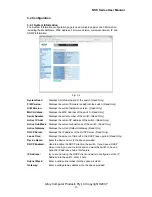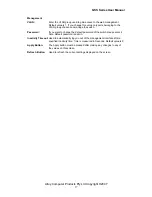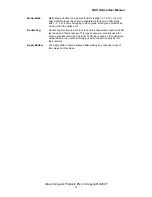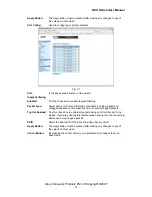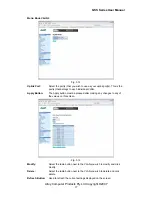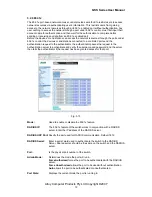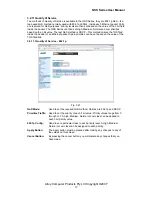
GSS Series User Manual
3.2.7 RSTP
The Spanning Tree Protocol is an IEEE 802.1d standard designed for avoiding unwanted
loops in switched networks. When STP/RSTP is enabled only a single path will be active
between any two nodes on a network. Spanning Tree is also used as a redundancy method to
eliminate down time if a device or cable goes down on your network. By creating multiple
paths between nodes on a network, spanning tree will allow only one active link between
these nodes, if a link or device fails the spanning tree protocol will automatically switch to an
alternative path.
The Rapid Spanning Tree Protocol is a more advanced protocol than STP according to the
IEEE 802.1w standard. RSTP shortens the convergence time if a particular path fails between
nodes on a network.
Fig. 3.14
System Configuration:
System Priority:
Is a value used to identify the root bridge of the spanning tree network.
The bridge with the lowest values has the highest priority and becomes
the root. 16 Values are allowed by the switch ranging from 0 to 61140 in
increments of 4096.
Hello Time:
The number of seconds between the transmission of the Spanning Tree
Protocol configuration messages. Enter a value from 1 to 10.
Max Age:
The number of seconds a bridge waits without receiving STP
configuration messages before attempting a re-configuration. Enter a
value from 6 to 40.
Forward Delay:
The number of seconds a port waits before changing from it’s learning
and listening states to a forwarding state. Enter a value from 4 to 30.
Force Version:
When set to normal the switch will use RSTP. When set to compatible the
switch will be compatible with the older STP.
Port Configuration:
Port:
Is the physical port number of the switch.
Aggregations:
Used if you would like to enable RSTP on any port aggregation groups.
Alloy Computer Products Pty Ltd Copyright ©2007
30

